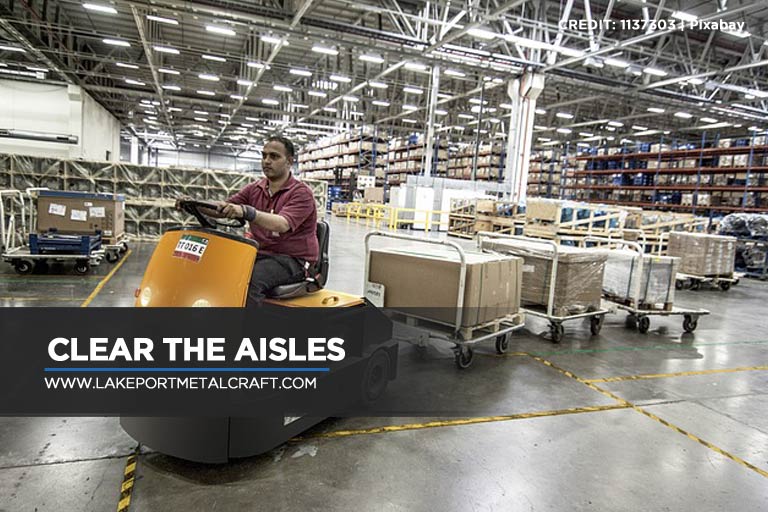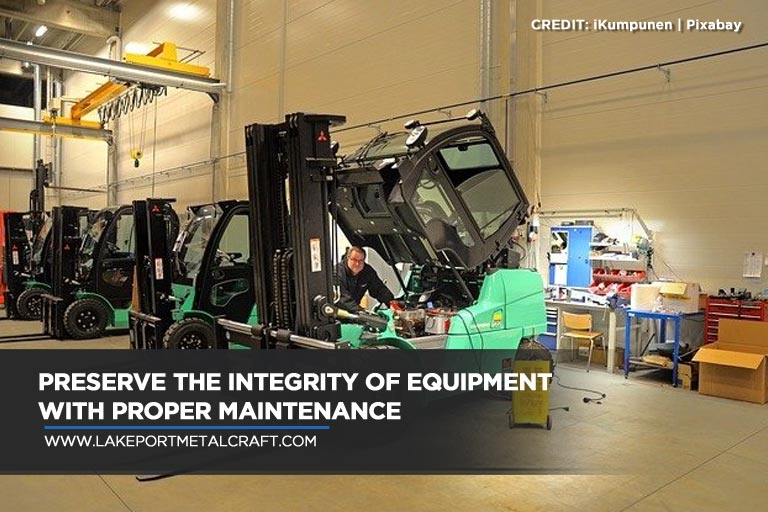Proper warehouse management plays an important role in your business’ supply chain. Keeping your warehouse in top shape often includes proper organization, management, and maintenance of all processes to ensure operations remain smooth and efficient. How you organize and manage your warehouse can make or break your company’s bottom line.
Common Warehouse Management Problems

The warehouse chain of processes is interlinked with each other. Warehouse problems and challenges can affect speed, efficiency, and productivity. It can throw daily warehouse operations into disarray and delay order fulfillment or increase operating hours. Unfortunately, some errors are only detected after the operation has started or completed. Warehouse operators should give routine maintenance the same level of priority as daily operations to ensure efficient processes all throughout.
Take note of the most common warehouse management challenges and what you can do to stay clear of them:
- Disorganized Layout – Ineffective use of space remains a common challenge in many small warehouses. A messy layout can trigger unnecessary labour costs, storage costs, and poor workflow. Improper use of storage systems and racking arrangement often results in full warehouse shelves, which prevents you from receiving new inventory.
- Inaccurate Inventory – Inaccurate records can only be detected when a warehouse employee needs to retrieve a product from an expected location but does not find it. This problem often results in wasted time and effort, as well as delayed shipments.
- Accidental Redundancy – Each warehouse item goes through multiple operations that are connected together to create a workflow. However, an unorganized workflow could lead to redundant activities. Accidental redundancy, such as duplicate information and date entry, double handling, and inventory issues, causes an increase in labour costs and wasted time as you need to trace and correct the error.
- Lack of Space – Insufficient warehouse space has a direct impact on the supply chain performance. Improperly stored goods could cause work accidents, time lost in finding the product, and loss of quality of the good.
- Slow Picking Processes and Stock Discrepancies – Spending several minutes locating an item can add up over the day. Slow item retrieval processes and stock discrepancies can have a significant impact on operating costs. Unorganized inventory could cause a delay in item pickup and shipment.
- Warehouse Slotting Problems – Forklift operators drive around the warehouse facility to find slots in the racking systems to store new goods. Without proper planning and organization, forklift operators will simply store the pallet of inventory whenever they find an empty space. Without considering the pallet family and size, it will eventually end up in a large amount of inventory slotting problems, with no room to reorganize due to lack of space.
- Seasonal Demands – Not all products are in demand all year round. Some are more popular during a specific season. Poor preparedness for sudden influxes of demand can do significant damage to your operation due to inadequate stock or shortage of storage space. Make sure to be on top of the current market trends and fluctuation of product demands.
- Damaged Products – Damaged products can generate additional warehouse operation costs. Loss by damage is usually caused by improper packaging or storage and mishandling during transit.
Keeping Your Warehouse in Top Shape
In some cases, efficient warehouse organization is easier said than done. If you are struggling with how to organize your warehouse, these warehouse management best practices can help boost productivity, optimize storage space, cut down unnecessary costs, and deliver exceptional service to your customers

- Eliminate Traffic Barriers – Although it seems obvious, clearing unnecessary stuff out of the main traffic area allows forklift operators to easily drive around the warehouse to organize and stack shipment products without major backup. It also prevents the risk of warehouse accidents and injuries.
- Observe Cleanliness All the Time – Allocating an hour or 2 every week must be included in your good warehouse practices checklist. Keeping the entire area decluttered and well-organized can improve efficiency and workflow. It allows your employees to move around easily and get things done as quickly as possible.
- Organize for Safety – Perhaps, we have discussed the essence of efficiency, but safety is also a top priority in warehouse operations. Warehouse safety not only protects your workers from danger but also increases your profit margins. Keep in mind that safety makes a warehouse more efficient.
- Regular Employee Training – Providing your staff with regular training on the importance of warehouse organization and correct usage of inventory tools and systems is a critical part of warehouse management and corporate culture.

- Embrace Lean Inventory Practice – Practicing lean inventory means keeping around the items you need during warehouse operations. It helps minimize the number of products to sort out when organizing freight and completing order fulfillment services. Reduce stocks, if possible, and try to get your suppliers to deliver smaller loads on a more frequent basis, as long as it does not add to the cost.
- Use Stackable Shelf Bins – Stackable shelf bins are a great warehouse improvement idea for the organization of small storage rooms. It allows your staff to organize and access high-demand small items without difficulty.
- Implement a Labelling System – Manual inventory identification is not only inconvenient but often results in more human errors. It can add stress to your already frazzled workforce. It can also lead to incorrect shipment, delays and other problems. Implement a bar code labelling system to streamline the process of documentation and automate data collection.

- Adopt Technology – Incorporating the latest warehouse management system technology can optimize your day-to-day operations. It helps you organize orders and deliver orders faster to your customers. Automating the processes helps lessen the burden of management and enables you to gather more accurate and timely data collection to ensure smart supply decisions.
- Create Organized Workstations – Musculoskeletal conditions, such as carpal tunnel syndrome, muscle strains, lower back pain, tendinitis, are among the leading causes of workplace injuries, according to the Canadian Centre for Occupational Health and Safety. Make sure the workstations are designed based on the specific needs and tasks of your employees to prevent potential injuries and drive greater workplace efficiency and productivity.

- Periodic Equipment Maintenance – Warehouse equipment and machinery, including forklift trucks, require periodic maintenance to keep them in good condition and functioning properly. Develop a maintenance plan to ensure regular monitoring and servicing of your equipment.
Having an effective warehouse management plan comes with numerous benefits, including an increase in productivity and prevention of losses due to emergencies or accidents. Make sure to include your staff in keeping your warehouse as safe and functional as possible.
With the range of onsite activities, warehouses can be a hazardous place to work. Reach truck operators are at risk of standup forklist under-ride accidents. Equip your reach trucks and standup counterbalance trucks with The Backbone® to protect your drivers from catastrophic, life-altering injuries or death. Call Lakeport Metalcraft Inc. at (416) 587-5809 to learn more about this product.

